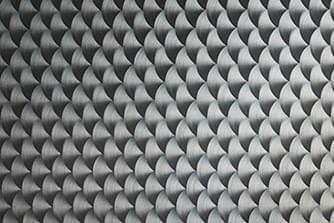1929 4½ Litre Supercharged Team Car #2 – UU 5872
No pre-war Bentley had an impact like the 4½ Litre ‘Blower’ Bentley. Its thunderous performance thrilled thousands - including author Ian Fleming, who later gave fictional hero James Bond a supercharged 4½ Litre Bentley.
UU 5872 was driven by Bentley Boy Henry (Tim) Birkin at Le Mans in 1930.
The Blower
As racing speeds increased in the late 1920s, W.O. Bentley’s answer was to increase engine capacity. But Birkin was impressed by engineer Amherst Villiers and the success he’d enjoyed with supercharging. He persuaded Bentley Chairman Woolf Barnato to approve the production of 54 supercharged 4½ Litre Bentleys, with four allocated for competition.
Competition Debut of Team Car #2
UU 5872 is the second of the four team cars developed at Birkin & Co’s workshops at Welwyn Garden City with sponsorship from heiress the Hon. Dorothy Paget. It made its debut at the 1930 Irish Grand Prix with Bernard Rubin at the wheel, finishing eighth.
Rubin also drove UU 5872 at the Ulster TT in August 1929, where he rolled the car. Following Rubin’s crash, UU 5872 was rebuilt with a new, 9’9” chassis and Vanden Plas bodywork for the Brooklands Double Twelve in May 1930. Tim Birkin and Jean Chassagne shared the driving until a cracked chassis frame forced their retirement.
The 1930 Le Mans Duel
For the 1930 Le Mans, Mercedes entered the formidable 7-litre supercharged SSK, driven by Rudi Caracciola and Christian Werner. Facing them was Bentley Motors works team of three Speed Sixes. Birkin’s team entered three Blowers, led by Birkin in Team Car No.2.
The pace was frenetic. Famously, Birkin passed Caracciola’s Mercedes SSK down the Hunaudières straight with two wheels on the grass - and a bald rear tyre. Somehow, Birkin stayed in front for an entire lap before pulling into the pits.
Neither the Mercedes nor Birkin made it to the finish. Caracciola’s Mercedes retired first, with water pouring from the engine, while the No.2 Team Car dropped a valve with four hours to go. Barnato and Kidston took the chequered flag in the works Bentley Speed Six.
Brooklands Swansong
UU 5872’s swansong was the Brooklands 500 handicap race in October 1930, when Dr ‘Benjy’ Benjafield and Eddie Hall drove it to second place on handicap at an average speed of 112.12 mph. By May 1931 UU 5872 and the other remaining Birkin team Blowers were advertised for sale in Motor Sport, each guaranteed to attain 125mph in racing trim.
UU 5872 Today
The No.2 Team Car was sympathetically restored in the 1960s, preserving its original patina. Owned by Bentley Motors since 2000, it has competed in the modern Mille Miglia, has driven from Crewe to Le Mans on many occasions and has appeared at the Goodwood Festival of Speed and the Pebble Beach Concours d’Elegance.
In 2019 – the centenary of Bentley Motors – the company announced it would be creating a continuation series of 12 Bentley Blowers, using laser-scanned 3D CAD data taken from the No. 2 Team Car.
| Date Produced | 1929 |
| Number Built | Four team cars (one with two chassis numbers) |
| Body | Originally Harrison’s four-door ‘British Flexible’. Rebodied May 1930 (new 9’9” chassis) Vanden Plas open tourer |
| Engine | 4-cylinders; 100 mm x 140 mm, 4398 cc. four valves; hollow overhead camshaft; cast-iron non-detachable cylinder head, cast iron cylinders; aluminium/Elektron crankcase, cam chest and sump. Amherst Villiers Mk IV roots-type supercharger |
| Power | 240 bhp (178 kW) @ 4200 rpm |
| Transmission | Rear wheel drive, single dry plate clutch. 4-speed D type gearbox |
| Chassis | 40-ton pressed steel frame, half elliptic leaf spring suspension; Bentley & Draper dampers; Bentley-Perrot mechanical brakes, 15.75 in (40 cm) drums; worm and sector steering |
| Dimensions | Wheelbase 117.5 in (298.45 cm) |
| Performance | 125 mph. 0-60 mph 12 sec |




























































